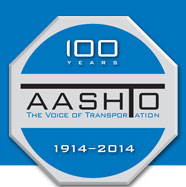
October 21, 1914
One Hundred Years Ago Today in Transportation...
Looking Back in Time: Revamped Mohawk Trail, Oct. 22, 1914“Most Beautiful Road in New England Formally Opened This Afternoon with Dedication of the New Mohawk Trail,” proclaimed a headline in that day’s edition of the Massachusetts-based North Adams Transcript newspaper.
The Mohawk Trail coursing through the Berkshire Mountains in northwestern Massachusetts had actually been in existence for centuries, tracing its origins as a major Native American trade route that connected Atlantic tribes with those tribes in present-day New York and beyond. Those tribes included not just the Mohawks but also the Wampanoags, Nipmucs and Mahicans. (The use of the name “Mohawk Trail” for describing that route first appeared in print in 1894.)
Starting in the early 19th Century, that trail was extensively used as stagecoach road. A number of passengers traveling through the region in that mode of transportation reportedly found themselves impressed by the surrounding scenic beauty, but also daunted by the imposing terrain and in particular a steep upgrade on Whitcomb Summit on Hoosac Range in the Berkshires where the Mohawk Trail would take them.
As writer Nathaniel Hawthorne remarked in 1836: “Often it would seem a wonder how our road was to continue, the mountain rose so abruptly on either side.”
That topographical challenge took on new urgency in the first years of the 20th Century, thanks to the ever-increasing usage of automobiles. Starting in 1912, construction efforts took place to adapt the footpath-turned-stagecoach road into a route that could better accommodate motor vehicles as well.
That renovation project focused on a 15-mile stretch of the Mohawk Trail between the city of North Adams and the town of Charlemont. While that stretch remained unpaved and would be widened to only 15 feet at the time, it was also engineered to a grade more suitable for an automobile to scale the precipitous mountain.
That newly created accessibility for the horseless carriage was a cause for great fanfare during the dedication ceremony on that Thursday afternoon. The festivities officially began with the raising of the U.S. flag on the summit, and more than 1,800 people showed up there to help inaugurate the improved route.
In addition, there were a number of newspaper reporters and representatives of various automobile journals likewise in attendance. Also present at the ceremony were nearly 300 automobiles from not only Massachusetts but also New York, Connecticut, Vermont, New Hampshire and Rhode Island.
“The enthusiasm over the scenery, the arrangements for the dedication, and the ceremony itself was marked,” reported the North Adams Transcript. “There was not a hitch in the proceedings. The day was well-nigh ideal, and the event on the mountain top was a success from every standpoint.”
Those proceedings also featured a number of speakers, including George P. Lawrence as the master of ceremonies. Lawrence, who had served that area as a U.S. congressman until the previous year and strongly championed an automobile-friendly version of the Mohawk Trail, set the tone for the day’s celebratory atmosphere.
“We invite our friends from far and near to come here and behold for themselves the wondrous beauties of the Mohawk Trail,” he said in his own remarks for the occasion. “We know there is no more beautiful scenic route in New England, and being somewhat intoxicated by the Berkshire air, I feel like proclaiming that there is none more beautiful in all the world.”
Thanks to the Massachusetts state legislature that segment of the Mohawk Trail would be officially designated a scenic tourist route – the first of its kind in New England and among the first in the entire U.S. Now part of Massachusetts Route 2, that trail remains a popular scenic drive for those traveling through the part of the world.
Additional information on the route and its centennial can be found on the Mohawk Trail Association’s website at http://www.mohawktrail.com/history.html, and in a recent Yankee Magazine article at http://www.yankeemagazine.com/article/travel/the-mohawk-trail-turns-100













